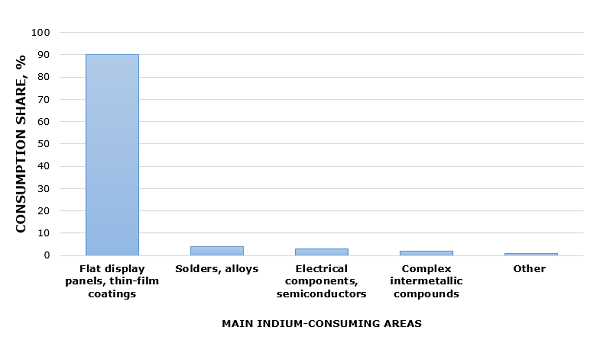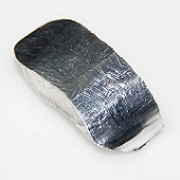Indium (In) is a rare-earth metal employed in flat-panel display screens (as a component of thin-film coatings), solders, alloys, electrical components, semiconductors, photovoltaic cells (e.g., copper indium gallium diselenide solar cells), complex intermetallic compounds (e.g. indium gallium nitride) and other high-tech applications.
Indium: major consumption sectors

Indium is consumed mainly in the form of indium tin oxide (ITO). Despite availability of some substitutes (e.g., antimony tin oxide, hafnium, carbon nanotubes, etc.), indium is classified as a critical metal in various countries. For instance, China restricts its indium export by imposing a combination of export quotas and tax.
The major sources for indium are Zn, Sn and Cu mineral deposits, specifically zinc-sulfide ore mineral sphalerite. Indium occurrence in the Earth crust is quite small. Though there are over 1,500 indium-containing mineral deposits, the development of many of them is not economically viable, while the level of the monopolization of extractable indium resources is particularly high with just a few countries hosting indium extraction. The bulk of indium resources is located in Bolivia, China, Russia, Canada and Japan. Indium processing and recovering from wastes could be an important source too, alongside with advances in indium production technologies (e.g. indium separation from other associated metals), but recovery from wastes is not enough to substitute primary sources of this metal. On par with rising demand, limited supply leads to the volatility of indium prices which have fluctuated by over 2.5 times in the last decade.
More information on the indium market can be found in the in-demand research study “Indium: 2017 World Market Review and Forecast”.
